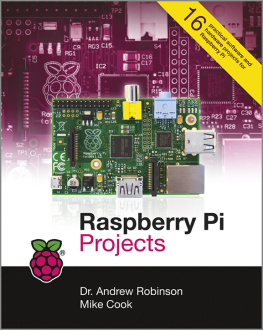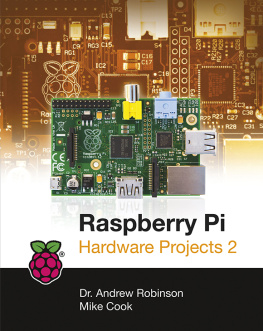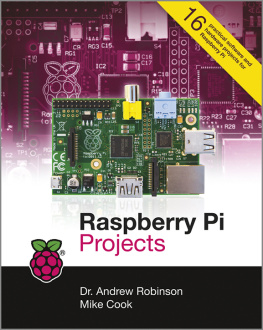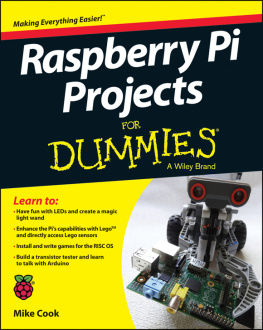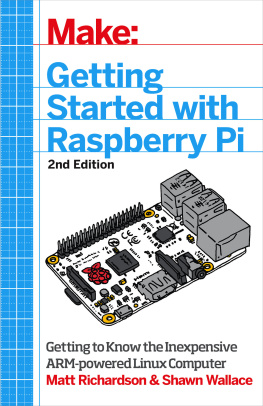
This edition first published 2014
2014 John Wiley & Sons, Ltd.
Registered office
John Wiley & Sons Ltd, The Atrium, Southern Gate, Chichester, West Sussex, PO19 8SQ, United Kingdom
For details of our global editorial offices, for customer services and for information about how to apply for permission to reuse the copyright material in this book please see our website at www.wiley.com.
The right of the authors to be identified as the authors of this work has been asserted in accordance with the Copyright, Designs and Patents Act 1988.
All rights reserved. No part of this publication may be reproduced, stored in a retrieval system, or transmitted, in any form or by any means, electronic, mechanical, photocopying, recording or otherwise, except as permitted by the U.K. Copyright, Designs and Patents Act 1988, without the prior permission of the publisher.
Wiley also publishes its books in a variety of electronic formats. Some content that appears in print may not be available in electronic books.
Designations used by companies to distinguish their products are often claimed as trademarks. All brand names and product names used in this book are trade names, service marks, trademarks or registered trademarks of their respective owners. The publisher is not associated with any product or vendor mentioned in this book. This publication is designed to provide accurate and authoritative information in regard to the subject matter covered. It is sold on the understanding that the publisher is not engaged in rendering professional services. If professional advice or other expert assistance is required, the services of a competent professional should be sought.
Trademarks: Wiley and the John Wiley & Sons, Ltd. logo are trademarks or registered trademarks of John Wiley and Sons, Ltd. and/ or its affiliates in the United States and/or other countries, and may not be used without written permission. Raspberry Pi is a trademark of the Raspberry Pi Foundation. All other trademarks are the property of their respective owners. John Wiley & Sons, Ltd. is not associated with any product or vendor mentioned in the book.
A catalogue record for this book is available from the British Library.
ISBN 978-1-118-55543-9 (paperback); ISBN 978-1-118-55556-9 (ePub); ISBN 978-1-118-55553-8 (ePDF)
Set in Chaparral Pro Regular 10/12.5 by Indianapolis Composition Services
Printed simultaneously in Great Britain and the United States.
To the kitchen table inventors, and their long-suffering families that have to live with them.Andrew Robinson
To Mike Bibby, who was the first editor to give me the opportunity to write regularly about computers and hardware. His unfailing enthusiasm about all things and his inability to take anything just on trust are an example to us all. A continuing and valued friend.Mike Cook
Publishers Acknowledgements
Some of the people who helped bring this book to market include the following:
Editorial and Production
VP Consumer and Technology Publishing Director
Michelle Leete
Associate DirectorBook Content Management
Martin Tribe
Associate Publisher
Chris Webb
Executive Commissioning Editor
Craig Smith
Project Editor
Dana Lesh
Copy Editors
Dana Lesh, Kathryn Duggan
Technical Editor
Genevieve Smith-Nunes
Editorial Manager
Jodi Jensen
Senior Project Editor
Sara Shlaer
Editorial Assistant
Annie Sullivan
Marketing
Associate Marketing Director
Louise Breinholt
Marketing Manager
Lorna Mein
Senior Marketing Executive
Kate Parrett
Marketing Assistant
Polly Thomas
About the Authors
Andrew Robinson is the founder of a successful embedded computing design consultancy firm based in Manchester. Passionate about education, he runs workshops and training sessions for all levels of experience, from design engineers to teachers and school children. His projects with the Raspberry Pi have appeared in the national press and on ITV, Channel 5 and BBC television. He is an Honorary Research Fellow of the University of Manchester, where previously he completed his Ph.D. in low power-embedded processors.
Andrew can trace his enthusiasm for electronics and computers back to building a working model lighthouse at the age of five.
Mike Cook, veteran technical author and electronics maker from the U.K., was born in Manchester and still lives close by. He is best known to the public for a series of over 300 articles which appeared in The Micro User, Acorn Computing and Acorn User from 1983 to 2000. These were called the Body Building Course and Run the Risc and covered the design and build of new gadgets, interfaces and peripherals for the old (vintage) BBC computer and the RISC PC. He also wrote numerous reviews, software articles and the readers problem page in these magazines.
Mike started work in the late sixties at an industrial electronics company in Oldham. He went on to take a degree in physical electronics at Newcastle, including a year spent working at the Admiralty Underwater Weapons establishment at Portland. His post-graduate research was in sound compression at the University of Salford. He spent over 20 years at Manchester Metropolitan University (initially Manchester Polytechnic) lecturing in physics, specialising in computer instrumentation, astronomy and image processing. Later he moved back into industry where he headed the hardware design team for the pioneering digital terrestrial set top box, and has been a development manager for security and RFID products.
He now works freelance as an embedded electronics consultant and author. His last book was The Raspberry Pi For Dummies published by Wiley.
Recently he has been designing even more things in the arena of physical computing, exhibiting at the U.K. Maker Fairs, Mini Maker Fairs and the prestigious New York World Maker fair. Mike was the recipient of a Maker of Merit Blue Ribbon at the 2013 Rome Maker Faire.
Jonathan Evans has had a life-long interest in computers and electronics. At the tender age of 10, he taught himself how to program a computer, and he quickly learned how computers and electronics could be married for a functionality to keep his siblings out of his room. He has gone on to become a distinguished IT professional with over 20 years of experience. His passion for creation and innovation combines perfectly with the Raspberry Pi phenomenon, and in his spare time he enjoys exploring projects to make the Raspberry Pi relevant to everyday life. He enjoys sharing his ideas at www.projects.privateeyepi.com where he continues to explore the endless possibilities of this computing platform.
Sean McManus writes inspiring books and articles about computing. He contributed the chapter on Minecraft to Raspberry Pi Projects, and his previous books include Raspberry Pi For Dummies (written with Mike Cook), Scratch Programming in Easy Steps, iPad for the Older and Wiser, Microsoft Office for the Older and Wiser, and Web Design in Easy Steps. Visit his website at www.sean.co.uk.
Introduction
When were young, making things is second nature painting a picture, inventing a game, telling a story, building a rocket from a washing-up liquid bottle that were convinced will fly all the way to the moon. Childhood is all about adventure, discovery the quest for something new.
Although these joys dont fade with age, it can become harder to find space and time for play and discovery as real life takes over. But yet, some of the greatest inventions and discoveries of history were the result of curious people not being afraid to have a go, often tinkering away in their own homes or garden sheds rather than high-tech well-funded engineering companies.

